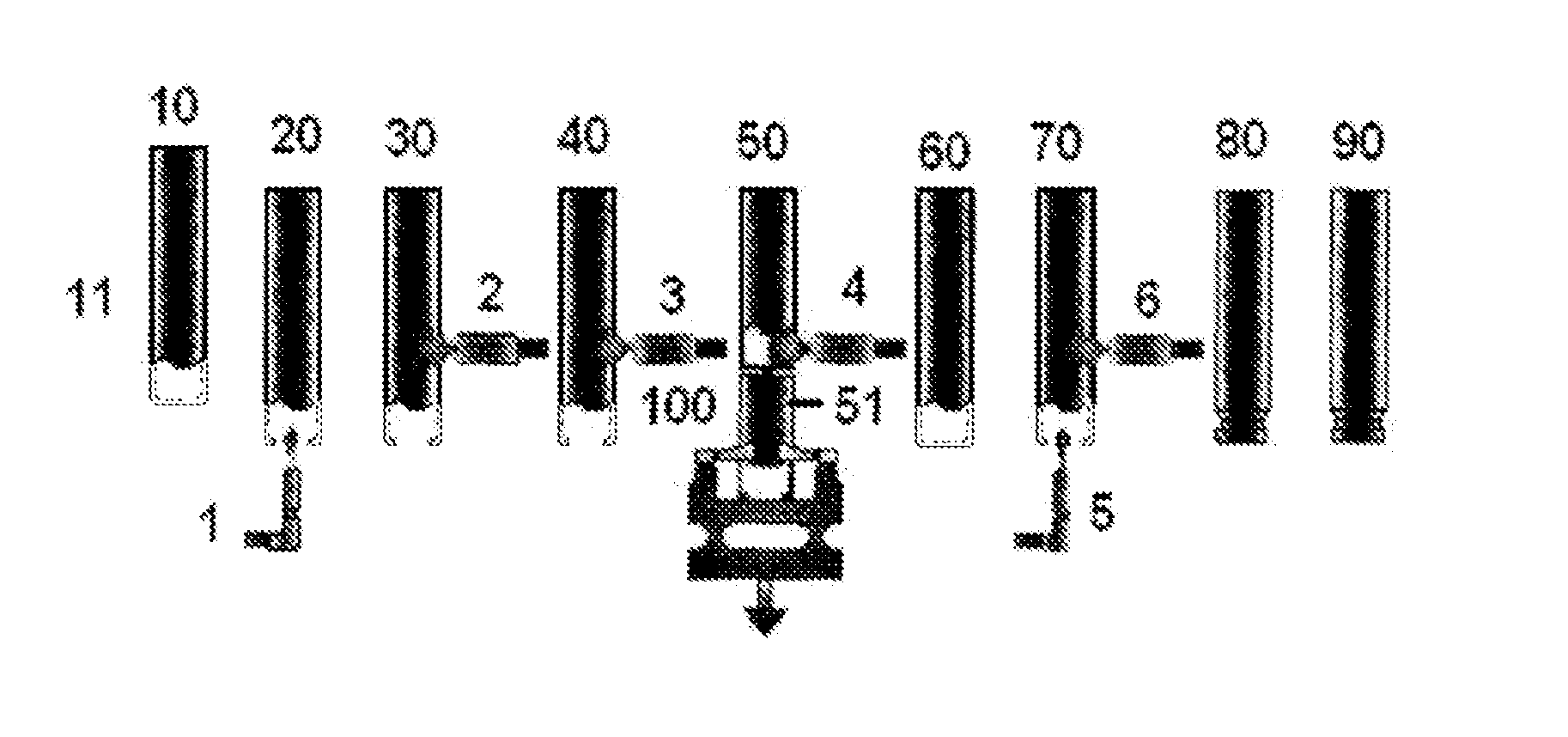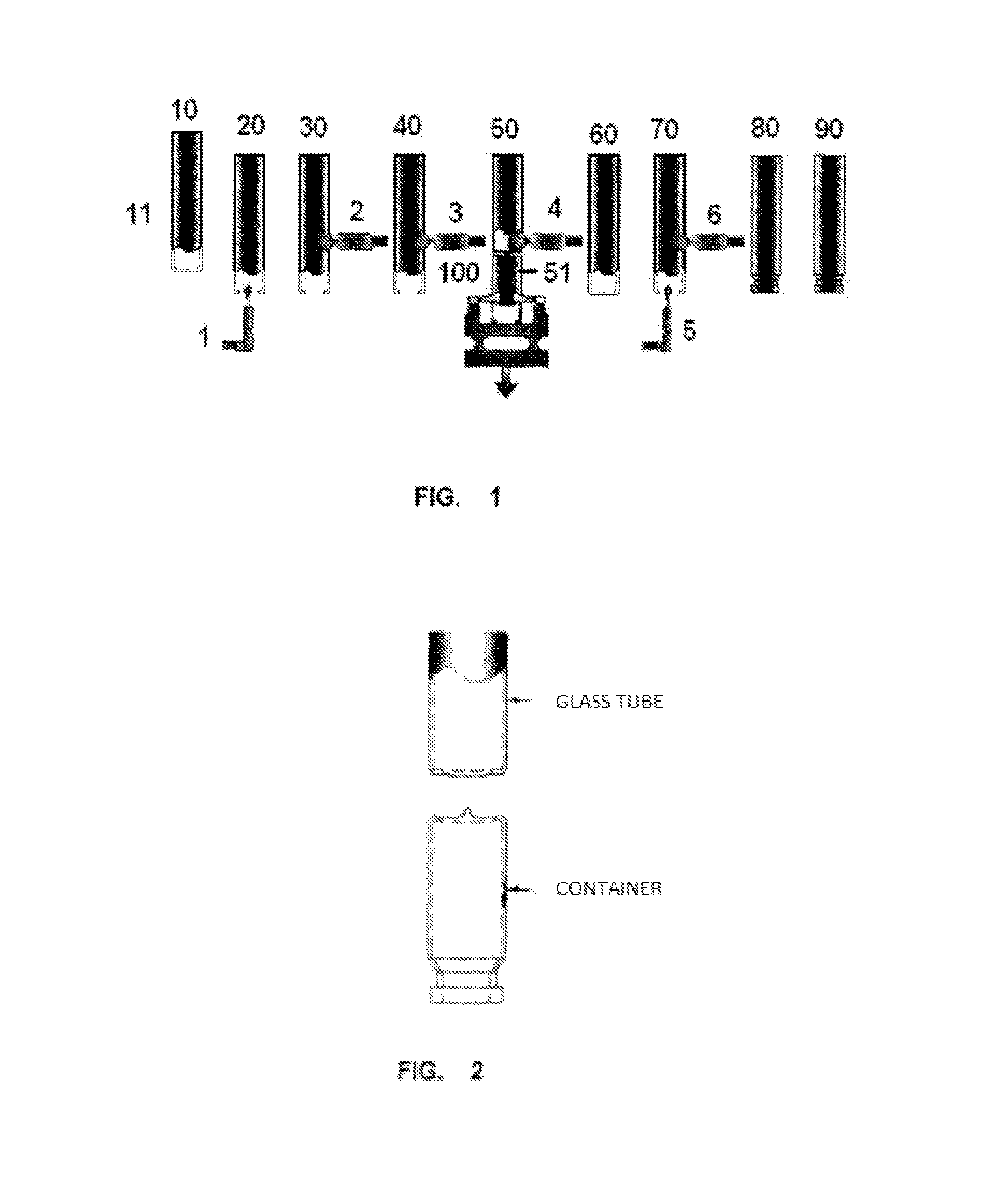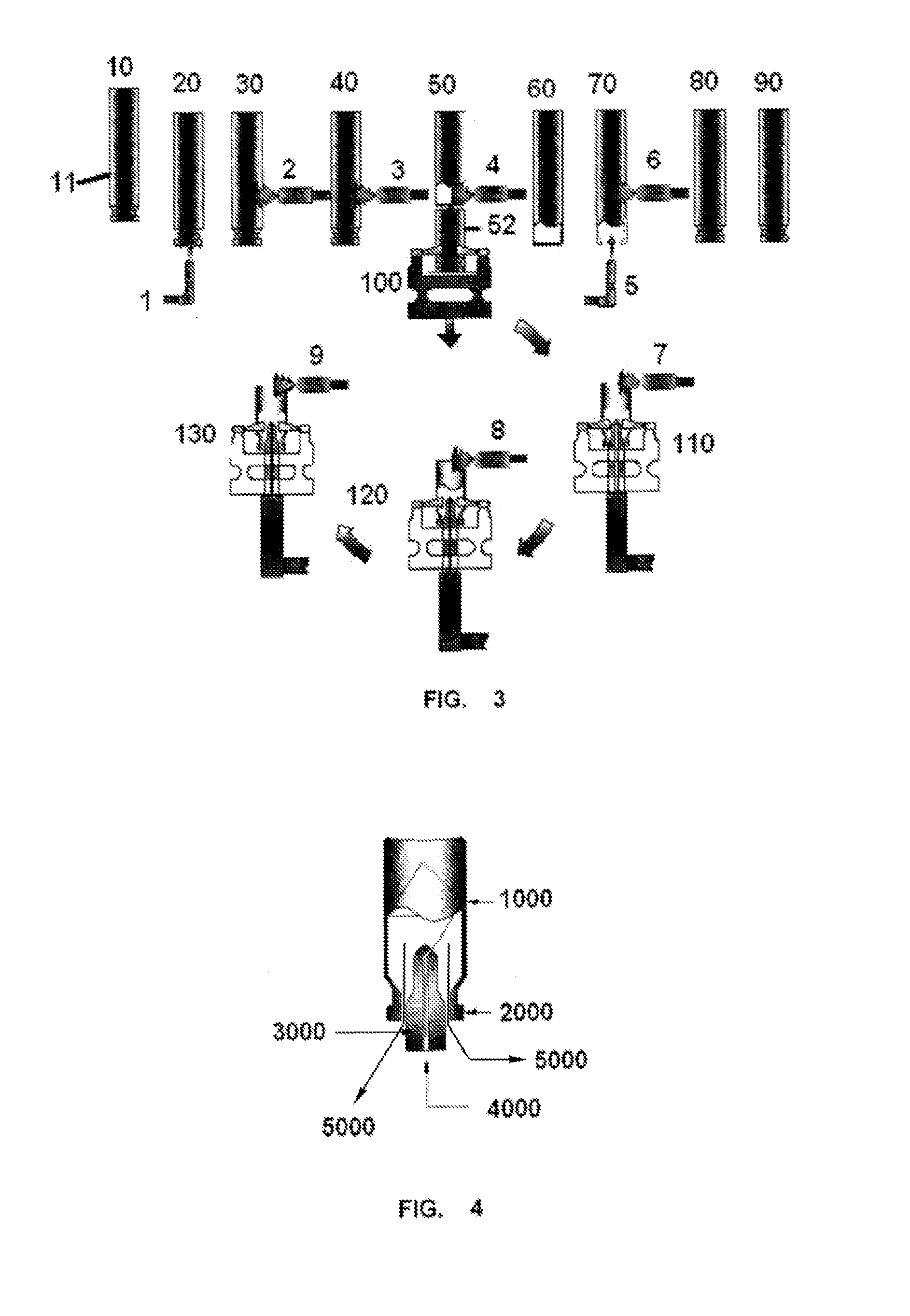Method for manufacturing glass containers for pharmaceutical use
a glass container and pharmaceutical technology, applied in the direction of glass shaping apparatus, packaging goods type, closure stoppers, etc., can solve the problems of affecting the final product, affecting the chemical stability, and affecting the quality of the final product, so as to prevent the deterioration of the drug
- Summary
- Abstract
- Description
- Claims
- Application Information
AI Technical Summary
Benefits of technology
Problems solved by technology
Method used
Image
Examples
example 1
Assessment of the Degree of Alkalinity of the Containers: Comparative Study of the Process of the Invention and Other Processes
[0109]Glass containers for pharmaceutically use of 10 ml volume were manufactured in a rotary machine according to the process of the invention and according to processes that did not include some of the steps of the first one. Alkalinity determination was performed according to the guidelines of the U.S. Pharmacopeia 34.
[0110]Assays were performed according to a 22 factorial design, whose experimental matrix including the results is shown in Table 3:
TABLE 3AlkalinityAssayMini-explosionAir injection(ml HCl 0.1N)1 (Comparative)NoNo0.952YesNo0.75(Comparative)3NoYes0.50(Comparative)4YesYes0.26(Invention)Treatment with——0.25silicone(WO2009 / 143439-A1)
[0111]It can be seen that with the process of the invention, Assay No. 4, a degree of alkalinity of the container is obtained that is substantially lower than in the traditional process (Example 1, comparative) which...
example 2
Assessment of the Particle Content: Comparative Study of the Process of the Invention and Other Processes
[0114]Glass containers for pharmaceutically use of 10 ml volume were manufactured in a rotary machine according to the process of the invention and according to processes that did not include some of the steps thereof. An electric furnace was used, with the exception of Comparative example 1, in which a gas furnace was used.
[0115]The content of particles in the containers was determined automatically by means of the Electronic Optical Bank CMP / 1E (CMP-Pharma, Italy).
[0116]Assays were performed according to the design matrix shown in Table 4, which also includes the results:
TABLE 4Mini-AirAirAssayexplosioninjectionSteamsweepParticles1NoNoNoNoGlass(Comparative)particlesOpen tubevisible2NoYesNoNoReduction of(Comparative)50%Open tube3YesYesNoYesReduction of(Invention)95%4YesYesYesYesReduction of(Invention)99.9%
[0117]It can be seen that with the process of invention, assays 3 and 4, a...
PUM
| Property | Measurement | Unit |
|---|---|---|
| angle | aaaaa | aaaaa |
| angle | aaaaa | aaaaa |
| angle | aaaaa | aaaaa |
Abstract
Description
Claims
Application Information
 Login to View More
Login to View More - R&D
- Intellectual Property
- Life Sciences
- Materials
- Tech Scout
- Unparalleled Data Quality
- Higher Quality Content
- 60% Fewer Hallucinations
Browse by: Latest US Patents, China's latest patents, Technical Efficacy Thesaurus, Application Domain, Technology Topic, Popular Technical Reports.
© 2025 PatSnap. All rights reserved.Legal|Privacy policy|Modern Slavery Act Transparency Statement|Sitemap|About US| Contact US: help@patsnap.com



